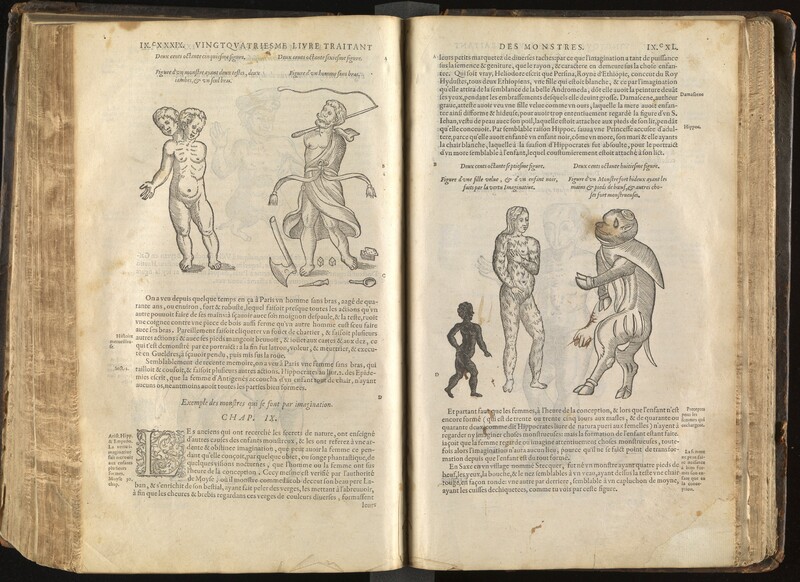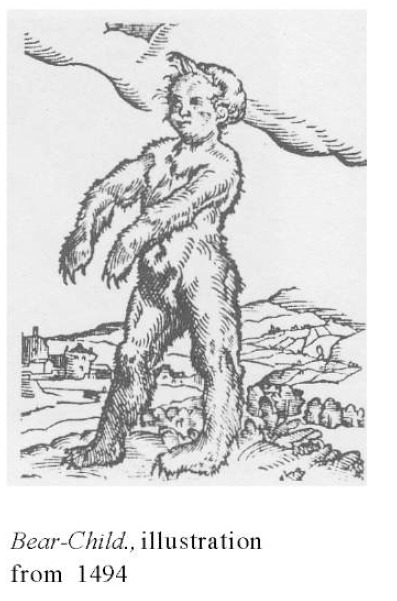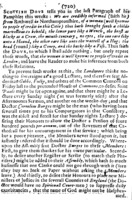Transgressing Boundaries: Birthing Monsters

Des monstres et prodiges
Two pages from a French publication published in 1573. The illustrations include drawings of people with deformaties as well as deformities referenced as "monstrous" as seen by the creature on the far right. Ambroise Paré, is regarded as a the "Father of Modern Surgery" and is described as having a fascination with monsters and his book explores how animals (and people) generate abnormalities.
These Protestant ideas of humanity in early modern England were not innate, but instead it was an action to be performed. Engaging in bestiality had transgressed over centuries from immoral but natural to being defined as lacking “human-ness” (or a liminal animalistic existence). It upset the order of nature as described in the Great Chain of Being where humans are described as superior to animals. Furthermore, it was believed that women were capable of birthing curses from God (monstrous creatures) if impregnated by an animal, so engaging in behavior deemed animalistic risked polluting the human species.[1] For example, in Des monstres et prodiges, there is a story (which the author claims occurred in 1493) of a child that born of a woman and a dog. The child’s upper torso was similar to that of its mother, but its lower torso was represenative of its beast of a father. Whereas bestiality was not punishable by death according to canon law, monstrous offspring were not extended the same mercy and were often executed by the hands of the Church. The hybrid-child was sent before the Pope to which the Pope ruled the monster must be purified and purged. Tales of monstrous offspring --particularly the tale of the child purged by the church-- continued to serve as a deterence for engaging in sex with animals since the potential offspring are garaunteed an execution. This story continued to be a cautionary tale against bestiality for “nearly a century."[2] [3]
According to another record of a monstrous birth in 1595, a woman gave birth to two children: a baby girl and the second child with body parts of a rabbit, mole, and a human. The monstrous child was described as being representative of “humanity’s fall away from purity and truth into corruption and sin” as well as “a thing… sent of God to fore-warn us of our wickedness.”[4] According to scholarship, legal depositions concerning bestiality consistently include exact details of the sexual acts because the potential for cross-breeding relies heavily on the act of penetration.[5]
In addition to birthing creatures that represent God’s wrath, monstrous births had the potential to create supernatural creatures. For example, it was believed that lycanthropy was a product of cross-breeding. Although the Protestant Reformation and the Werewolf Trials were experienced concurrently, more investigation into the potential connection between legislation and the Werewolf Trials are necessary in order to draw any definitive conclusions other than lycanthropy as a product of bestiality.
[1] Erica Fudge, “Monstrous Acts: Bestiality in Early Modern England,” History Today 50, 8 (2000): 22.
[2] Ibid.
[3] The same story is mentioned again in the later work Compleat history of the Most Remarkable Providences (1697).
[4] Ibid, 24.
[5] Ibid, 25.

